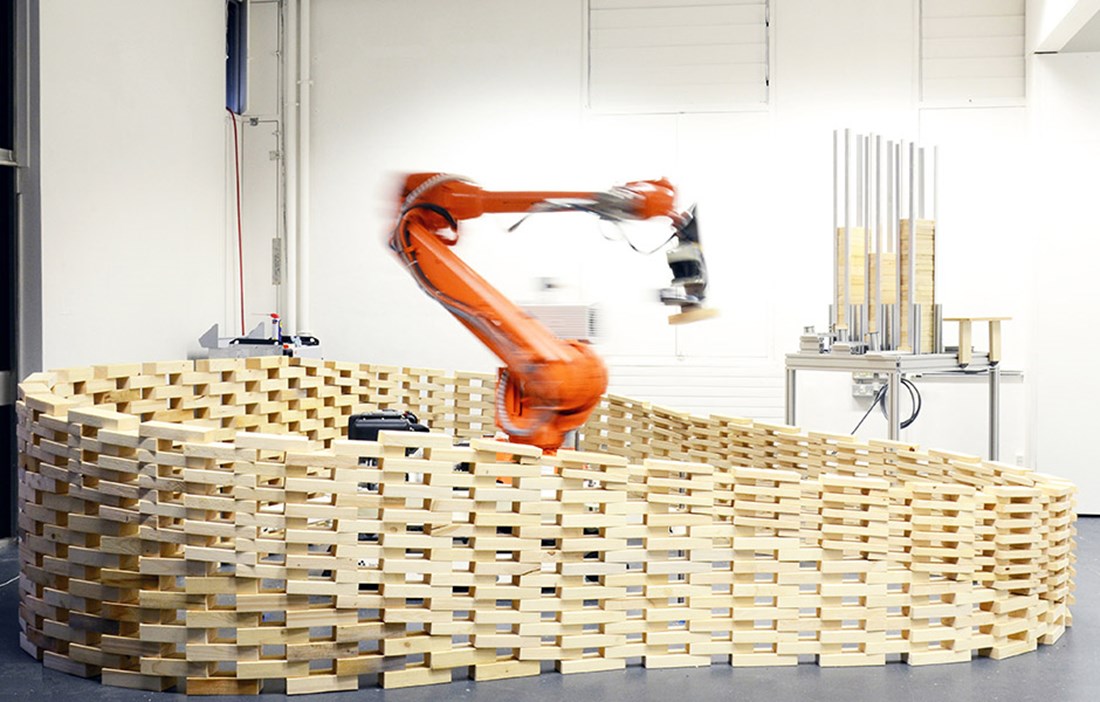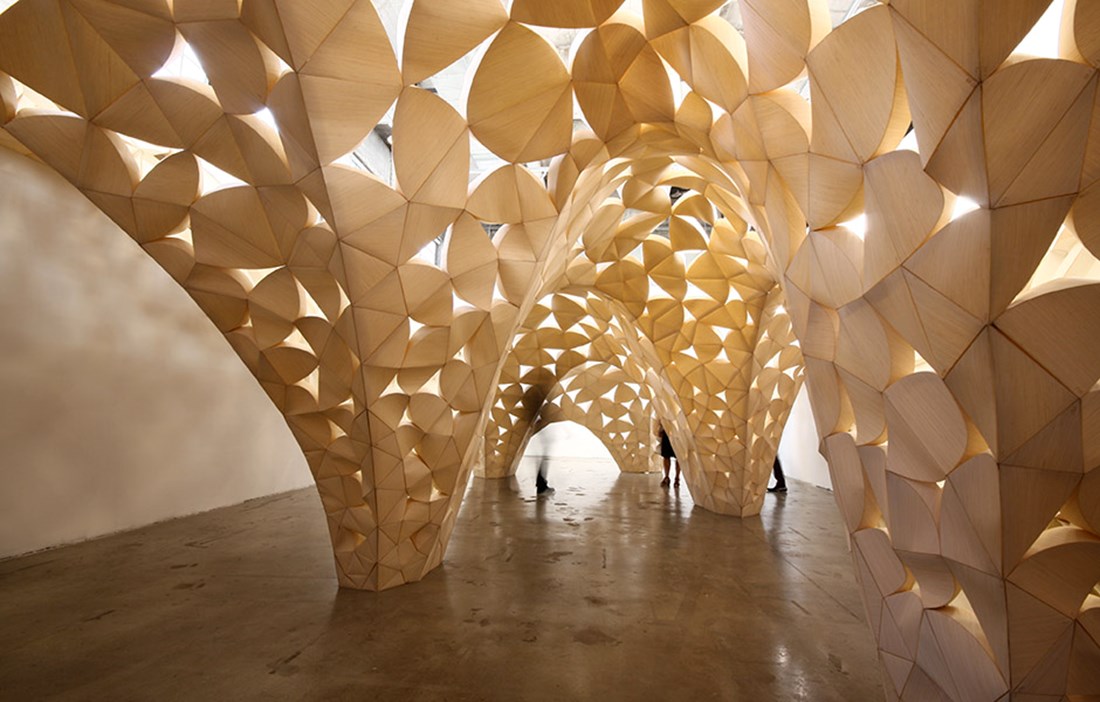TO BECOME A master craftsmen in the field of wood construction, you used to have to build a log cabin, from scratch, with just one single tool. The broadaxe would be used to fell the trees, trim and debark the trunks, and sculpt the logs into the unique pieces of the log cabin jigsaw.
Some of these masterpieces remain to this day, sometimes hundreds of years after they were built. But that level of craftsmanship is unlikely to be universally available, either today or in the future. To achieve the same quality of execution, we will instead have to trust to the precision of digital tools. For a Computer Numerical Control (CNC) milling machine, laser or sawblade every action is a potential precision job. They still have to carry out routine tasks, or jobs that could have been done by human hand, albeit more slowly and with greater effort.
However, in combination with an open approach to design, digital technology can achieve so much more than keeping costs down.
“Digital applications reduce the gap between presentation and construction, and hypothetically they offer a seamless transition between design and creation,” according to Lisa Iwamoto, partner of architectural firm IwamotoScott and author of the book Digital Fabrications.
IwamotoScott’s own example is the Voussoir Cloud pavilion, made of paper-thin veneers. A laser cut out the uniquely contoured shapes, which were then unfolded to form building blocks in petal form that were stapled to pillars and vaults. The procedure can be described as a kind of digital origami. The petals were gossamer light, even transparent, but their design and fold made them strong.
A DIGITAL INJECTION gave the material new properties, although this is nothing new. Structural capacity comes from the information we put into a material. But Lisa Iwamoto believes this will demand more from us in the future. We will become interpreters between ideas and machines:
“Architects essentially have to learn a new language.”
If that is true, then Mark Goulthorpe appears to be fluent. He is the founder of architectural firm dECOi and in their One Main project, he and his colleagues sculpted an entire office interior from one single material – the floor, ceiling, walls, fixed furnishings, door handles, everything is cut out of spruce plywood. To aid them, all they had was one three-axis CNC milling machine, barely larger than a microwave oven.
“Preparing the files took eight months, because we needed to invent programming code for sweeping tool movements. Second time around, it would be a breeze,” explains Mark Goulthorpe.
The product of the architects’ work was not drawings, but exact instructions for the machine’s patterns of movement. In addition to the actual design, there were calculations about minimising wastage and maximising efficiency.
Not since the dawn of the industrial revolution has the designer had such an influence over the end result, according to Mark Goulthorpe. He believes that the modern world of construction has become fixated on mass production, from screws and bolts to whole walls and rooms, which has limited architects in their freedom of expression. Until now.
AT THE SWISS FEDERAL INSTITUTE OF TECHNOLOGY in Zurich (ETHZ), they call this new situation ‘digital materiality’. For several years now architects and professors Fabio Gramazio and Matthias Kohler have worked at ETHZ, and they see the division of virtual and real, digital and material as a false one. These are not opposing sides.
Research at DFab Arch (Architecture and Digital Fabrication), which they lead, focuses on designing the processes, rather than necessarily their outcomes. This is achieved by programming conventional industrial robots, which have long been in use in aircraft and car factories. Around 10 years ago, the robots became cheap enough for architects to use them and DFab Arch bought one for its digital workshop. Fabio Gramazio explains why:
“Traditional automation takes a manual process and gets the robot to do the same thing. The result is greater efficiency, but not much more than that. This is not an architect’s perspective. We want to ask: ‘Does the technology allow us to do something that would otherwise be impossible?’”
They started working with lengths of wood, seeing them as modules. They soon realised that the grain of the wood could be used in various ways. Thanks to the robot’s precision, structural elements can be made from low-grade wood or even waste material. The system is now set for full-scale testing with a billowing 2000 m² roof structure. At the same time, they are currently expanding their options by building an experimental workshop with four robots suspended from the ceiling on a running gantry. Their working volume will be 43 x 16 x 8 metres. In other words, enough for an entire house.
However, Fabio Gramazio believes the fact that the robot is smaller than the buildings it is creating is a major advantage. Along those lines, DFab Arch has experimented with a robot on caterpillar tracks, for specialised and localised work.
“Construction sites will never be as controlled as a factory floor. They are unpredictable environments. But we don’t believe in making machines conscious of their surroundings and so autonomous. It’s much more sensible to let human and machine benefit from each other,” he says. “We humans perceive our world ‘for free’ via our senses, while the machines bring their precision and inexhaustibility.”
He sees the robot as a tool, an extension of the human hand.
Perhaps it will soon be the architect’s Swiss army knife? With it, a new outfit can be tailormade for existing buildings, or critical architectural issues can be resolved with surgical interventions. That old timber house, for example, perhaps needs the odd decaying corner replaced. Our friendly robot can be tasked with scanning, producing and installing a perfect new piece in place of the old one.
Just as the axe carved a trunk into a corner joint without the shortcut of a two-by-four timber, tomorrow’s digital axe will cut out a perfect structural component there and then. Joinery, which has recently almost taken on the monotony of the assembly line, is becoming much more like the craft of the tailor – measuring up, cutting out and putting together.
Text Björn Ehrlemark























